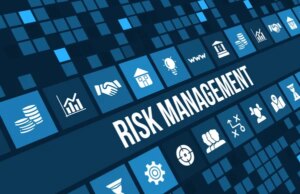Construction and Building Envelope Inspection Training Course
Course Fee:
Objectives:
This course will have the following main objectives and goals:
• Enable participants to interpret well the necessary skills used in the inspection of construction projects
• Familiarise the undertakers of this course with the knowledge and skills required for workmanship and maintaining quality work in the building and construction field
• Help the participants learn and apply various processes used in the inspection and testing of all construction projects
• Enable learning, practice, and exercise of the techniques and methods used in testing engineering materials
• Facilitate knowledge acquiring of how to properly be involved in the standards conformance of any construction project
• Enable participants to apply the utmost and appropriate maintenance inspection practices to ensure equipment and processes remain to provide and deliver the intended quality capabilities most cost-effectively
• Facilitate the practice and exercise of all the necessary procedures used in inspecting building envelopes
Course Content
Inspecting Steel Structures
• Welding joints and connections inspection
• Floor flatness and levelness testing methods for determining the F-Numbers
• Various techniques for fireproofing and assurance inspection
• Non-destructive testing methodology and technologies
• Engineering needs serving while handling soil classification
• Level II and Level III NDE
• Hold-downs systems, anchor bolts, joints, and Dowels inspection
• Inspecting steel structural constructions
Field Quality Assurance and Inspection
• What are the minimum components requirements for special inspection?
• Total quality management and assessment systems
• What is inspection and why does it matter?
• Special inspectors; roles and responsibilities
• Cipple walls inspection
• Connections of structural elements
• Shear walls construction and nailing
Standard Architectural Inspection Guidelines
• Woodwork standards and installation guidelines for inspection
• Insulation installation, types, and quality inspection
• Architectural roofing types, installations, and quality inspection
• What makes up a building envelope?
• Foundation works
o Foundation standards
o Rough plumbing
o Damp-proof course
o Proper soil handling and treatment for insects
o Depth below finished grade
o Foundation size
o Anchoring devices or systems
o Amount and placement of reinforcing steel
o Factors affecting the specified foundation
• Building construction structures
o Formworks and scaffolding
o Columns, slabs, staircases, general structure
o Elevation techniques
• Mechanical requirements
• Framing works’
o Walls
o Doors
o Windows
o Stair
o Openings
• Finishes
• Safety
Inspection Tools
• Sound meters
• Laser meter and how to ensure safety
• Wheel meters handling
• Tape measures readings
• Earth resistance meters and counterpart testers
• Concrete structure scanners (GSSI)
• Pocket digital light meter
• Radiation meter
• Elcometer
• Dust monitor
• Torque wrench
Digital Tools and How to Handle Them
• Digital moisture meter inspection kit
• Digital camera
• Digital shmidt hammer
• Digital voltmeter
• Repairs and accuracy calibration
Soil Inspection Guidelines and Procedures
• Asphaltic concrete inspection
• On-site soil inspection
• Earthwork and other techniques inspection
• Road construction inspection
• Field inspectors’ responsibilities
• Detailed analysis
• Sample collection
General Guidelines for Inspection
• Concrete NDT
• Concrete structures and buildings inspection
• Field Inspectors
• Shotcrete inspection
• Steel reinforced bars inspection
• Structural masonry inspection
Stages of Construction Inspection
• Handover Inspection and how to ensure everything works correctly
• Footing and overall inspection
• Slab quality and standards inspection
• Frame inspection
• Lock-up details and quality inspection
• Fixing procedures and stage
• Practical operational stage
Joints and Connections Inspection
• Introduction
• The basic process of welding
• Fillet joints
• Welding problems
• LRFD of Welded connections
• Prequalified welds
• Eccentric shear in Welds
• General provisions in connections
• Types of structural bolts and bolted connections
• Selecting standard connections using manuals
• Weld types in structural construction and their applications
Methodology
The training methodology integrates lectures, interactive discussions, collaborative group exercises, and illustrative examples. Participants will acquire a blend of theoretical insights and hands-on practical experience, emphasizing the application of learned techniques. This approach ensures that attendees return to their professional environments equipped with both the competence and self-assurance to effectively implement the acquired skills in their responsibilities.
DATE:
1ST BATCH: 18th – 21st Mar, 2025
2ND BATCH: 22nd – 25th July, 2025
3RD BATCH: 18th – 21th Nov, 2025
Course Category
- Human Resource and Admin
- Finance and Accounting
- Internal Audit and Fraud Control
- Stores, Procurement and Supply Chain
- Information Technology
- Aviation and Maritime
- Banking, Investment and Insurance
- Business Communication
- Construction Management & Civil Engineering
- Engineering, Instrumentation and Maintenance
- Entrepreneurship and Business
- Hotel & Hospitality Management
- Law and Contract Management
- Management and Leadership
- Project Management
- Public Relations
- Public Sector
- Sales, Marketing & Customer Service
- Secretaries & Personal Assistants
- Transport & Logistics
- Security and Safety
More Courses
VENUE
25, Queen street, Alagomeji Bus Stop, Yaba, Lagos










